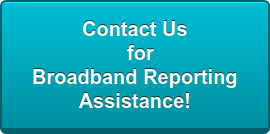Today's Regulatory Mix: FCC Designates 988 As 3-Digit Number for National Suicide Prevention Hotline, FCC Revises Broadband Mapping Requirements, FCC Adopts Robocall Safe Harbors, FCC Implements Secured Network Act, FCC Finalizes Wireless 911 Location Accuracy Rules
 FCC Designates 988 As 3-Digit Number for National Suicide Prevention Hotline
FCC Designates 988 As 3-Digit Number for National Suicide Prevention Hotline
At its Open Meeting, the FCC voted to establish 988 as the new, nationwide, 3-digit phone number for Americans in crisis to connect with suicide prevention and mental health crisis counselors. The rules require all phone service providers to direct all 988 calls to the existing National Suicide Prevention Lifeline by July 16, 2022. This includes all telecommunications carriers as well as all interconnected and one-way VoIP service providers. Under the new rules, calls to 988 will be directed to 1-800-273-TALK, which will remain operational during the 988 transition and after it is completed. To ensure that calls to 988 reach the National Suicide Prevention Lifeline, all covered providers will be required to implement 10-digit dialing in areas that both use seven digit dialing and use 988 as the first three numbers in seven-digit phone numbers.
FCC Revises Broadband Mapping Requirements
The FCC voted to adopt new rules for the improved collection and mapping of broadband availability data through the Digital Opportunity Data Collection. The new rules are intended to better identify connectivity gaps across the country and help advance the FCC’s ongoing efforts to close the digital divide. The Order implements key provisions of the recently enacted Broadband DATA Act, including requiring fixed and mobile providers to submit standardized broadband availability maps and taking steps to develop a common dataset of homes and businesses where fixed broadband networks could be deployed, over which service providers’ broadband availability maps will be overlaid. In the Further Notice, the FCC seeks comment on: (1) proposals for processes for consumers, governmental entities, and other parties to challenge the availability data represented in the broadband maps; (2) additional processes for verifying broadband availability data submitted by providers; and (3) targeted reforms to the FCC Form 477 subscribership data that broadband and voice providers are required to file biannually.
FCC Adopts Robocall Safe Harbors
At its Open Meeting, the FCC voted to adopt rules to further encourage phone companies to block illegal and unwanted robocalls before they reach consumers. Specifically, the FCC adopted rules offering companies two safe harbors from liability for the unintended or inadvertent blocking of wanted calls, thus eliminating a concern that kept some companies from implementing robust robocall blocking efforts. The first safe harbor protects phone companies that use reasonable analytics, including caller ID authentication information, to identify and block illegal or unwanted calls from liability. The second safe harbor protects providers that block call traffic from bad actor upstream voice service providers that pass illegal or unwanted calls along to other providers, when those upstream providers have been notified but fail to take action to stop these calls.
In an accompanying Further Notice of Proposed Rulemaking, the FCC seeks comment on additional steps providers can take to protect consumers from robocalls and better inform them about provider blocking efforts. This includes: (1) whether to obligate providers companies to better police their networks against illegal calls: (2) whether to require providers to provide information about blocked calls to consumers for free; and (3) whether measures are necessary to address the mislabeling of calls. The notice also seeks comment on notification and effective redress mechanisms for callers when their calls are blocked.
 FCC Implements Secured Network Act
FCC Implements Secured Network Act
The FCC voted begin integrating portions of the Secure and Trusted Communications Networks Act (Secure Networks Act), which was enacted in March 2020, into its existing supply chain rulemaking proceeding. (In that proceeding, the FCC adopted a ban on the use of federal USF support to purchase obtain, or maintain any equipment or services from companies posing a national security threat to communications networks or the communications supply chain.) The Declaratory Ruling finds that the FCC’s supply chain rulemaking fulfills its obligation under the Act to prohibit the use of federal subsidies for covered communications equipment and services.
The accompanying Second Further Notice of Proposed Rulemaking seeks comment on implementing various other aspects of the Secure Networks Act, including proposals to: (1) create and maintain the list of covered communications equipment and services required by the statute; (2) ban the use of federal subsidies, including USF funding, for any communications equipment or services placed on this list; (3) require all providers of advanced communications services to report on whether they use any covered communications equipment or services; and (4) prevent waste, fraud, and abuse in the reimbursement program that is required by the statute to remove and replace insecure equipment.
FCC Finalizes Wireless 911 Location Accuracy Rules
The FCC voted to affirm its requirements that nationwide wireless providers meet z-axis location metrics for 80% of indoor wireless 911 calls in the top 25 and top 50 markets by April 2021 and April 2023, respectively. It also adopted a new requirement that nationwide wireless providers deploy z-axis technology nationwide by April 2025, while affording non-nationwide wireless providers an additional year (i.e., until April 2026) to do so within their service areas. To give wireless providers additional flexibility in meeting these requirements, the FCC will allow providers to deploy technologies that focus on multi-story buildings, where vertical location information is most vital to first responders. Beginning in January 2022, the FCC also required wireless providers to provide dispatchable location with wireless 911 calls when it is technically feasible and cost-effective to do so.
____________________________
The Regulatory Mix, Inteserra’s blog of telecom related regulatory activities, is a snapshot of PUC, FCC, legislative, and occasionally court issues that our regulatory monitoring team uncovers each day. Depending on their significance, some items may be the subject of an Inteserra Briefing.





